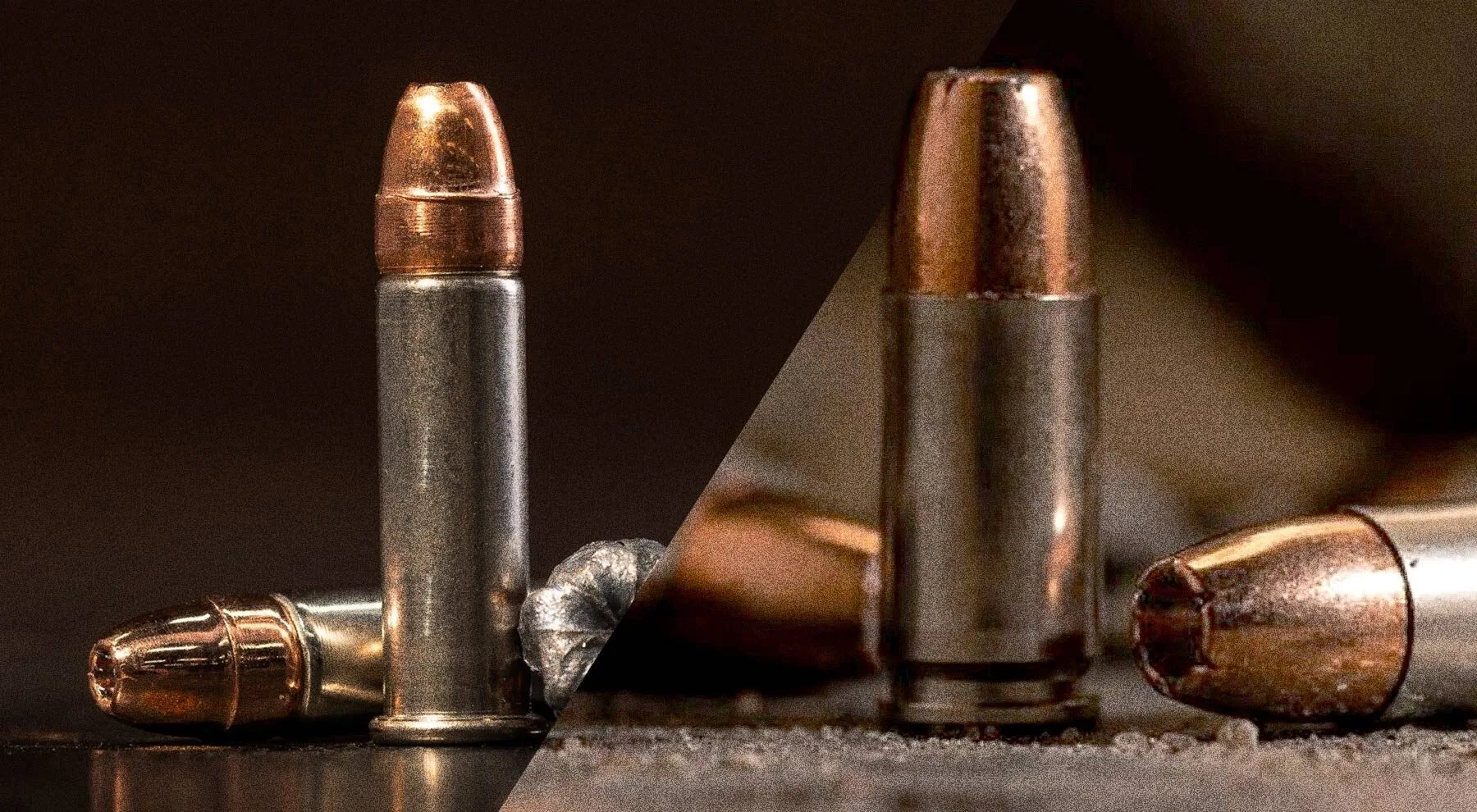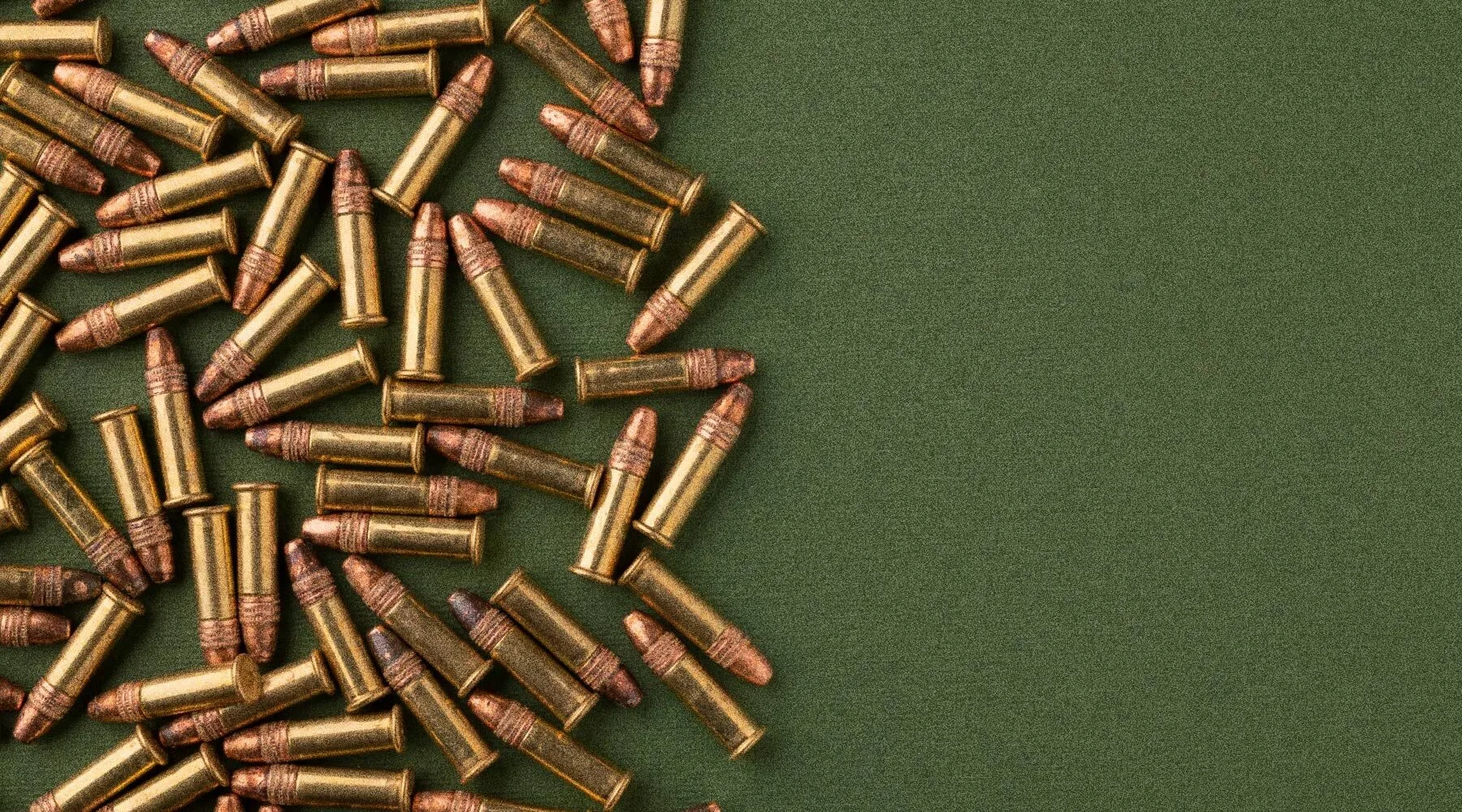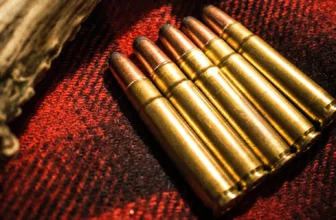TL;DR: 6.5 Grendel vs .223 Remington
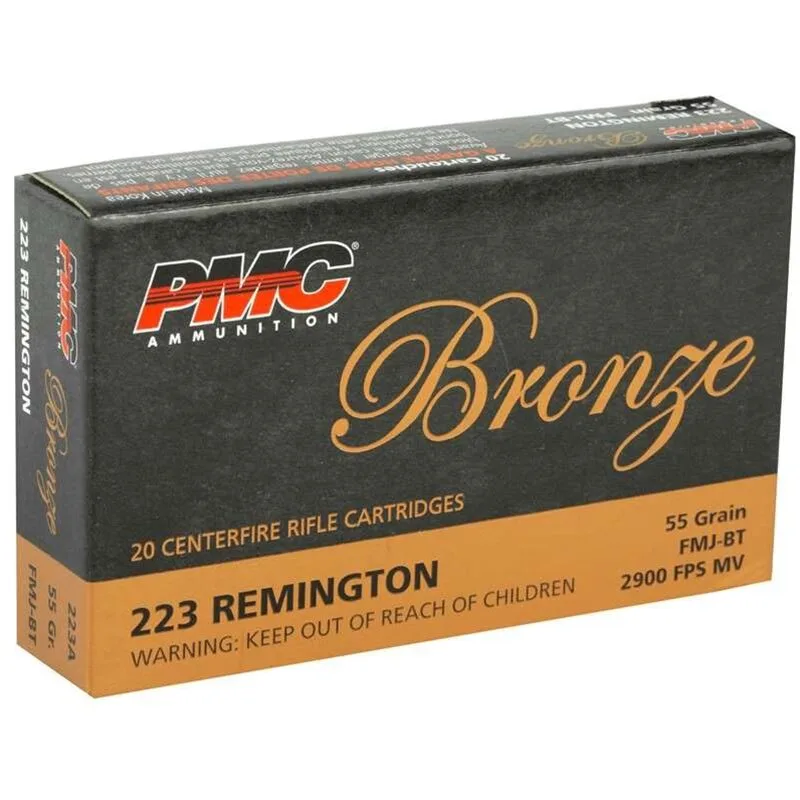
Muzzle Velocity 2900 fps
Muzzle Energy 1250 ft lbs
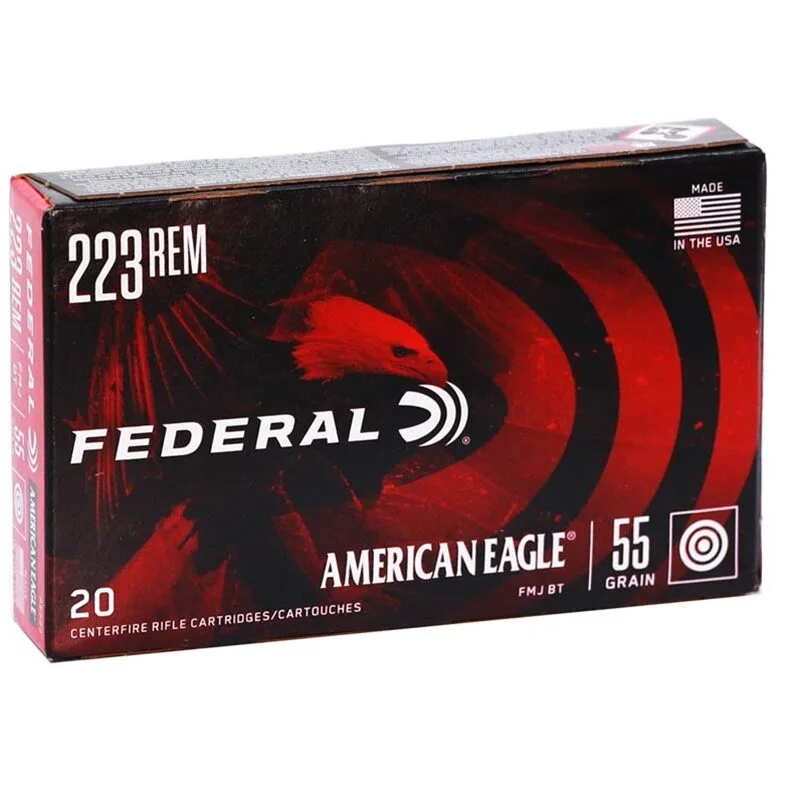
Muzzle Velocity 3240 fps
Muzzle Energy 1282 ft lbs
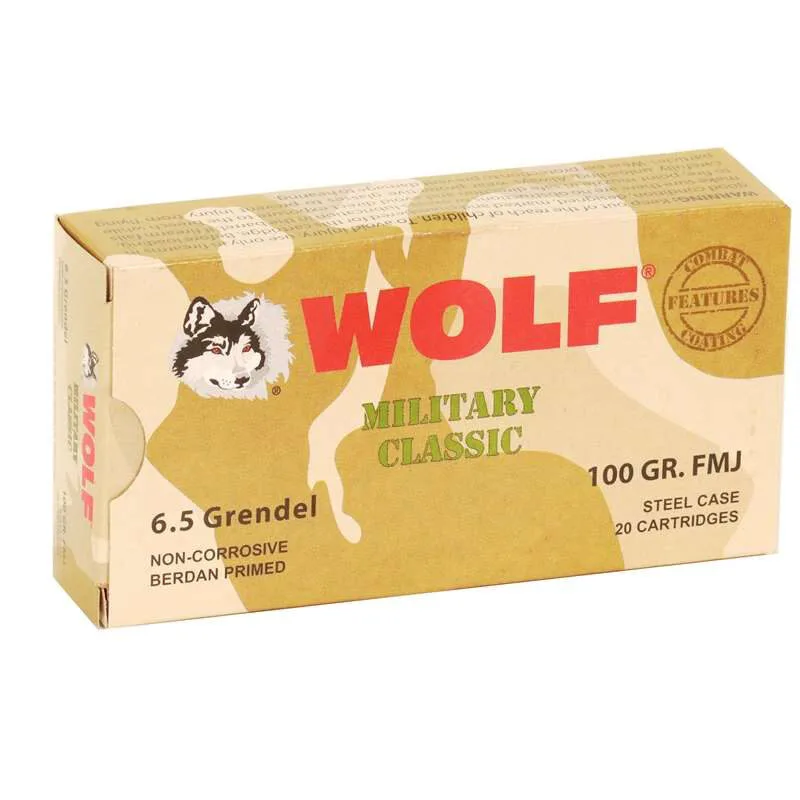
Muzzle Velocity 2690 fps
Muzzle Energy 1627 ft lbs
The short and sweet summary is listed here for those who want to cut to the chase…
The differences between 6.5 Grendel and .223 Remington come down to how you plan on using your ammo. Are you hunting medium to large game or long-distance shooting? Choose 6.5 Grendel because it flies fast and far. Do you need something cheap for practice or easy for varmint hunting? .223 Remington is the more popular option, particularly due to its versatility.
Quick Facts
| Feature | 6.5 Grendel | .223 Remington |
|---|---|---|
| Year Introduced | 2003 | 1962 |
| Designer | Bill Alexander and Janne Pohjoispää | Remington Arms |
| Typical Bullet Weight | 100 – 120+ gr | 55 – 77 gr |
| Common Applications | Medium/Large Game Hunting, Long-Range Target Shooting | Varmint Hunting, Target Shooting, Home Defense |
| Case Type | Rimless, bottleneck | Rimless, bottleneck |
| Primer Type | Small rifle | Small rifle |
The debate between the 6.5 Grendel and .223 Remington is pretty common and usually comes into conversation since both are used by AR-15 rifles for hunting or long-distance shooting.
Most individuals can confidently recognize or speak on the tried and true, old reliable .223. However, the 6.5 Grendel tends to be a bit more obscure or overlooked.
I’m here to fill you in on both calibers: 6.5 Grendel and .223 Rem. Inclusive of all the good stuff…technical specs, where you’d use these two cartridges, ballistic charts, and more. Hopefully you learn something new.
Other Relevant Reads:
Cartridge Specs Side-by-Side
Both the 6.5 and the .223 were designed to function within a standard AR-15’s magazine well, which is a 2.26” overall length. BUT, if we look at their case dimensions, they’re clearly different beasts.

The 6.5 Grendel was only more recently designed in 2003 by Bill Alexander in collaboration with Arne Brennan and Janne Pohjoispää. It has a slightly wider case diameter, giving it a larger case capacity for powder, which enhances ballistic performance… AKA it flies faster, flatter, further, and hits the target more effectively.
Side note: The “enhanced ballistic performance” refers to how the 6.5 Grendel’s larger case capacity for powder allows the cartridge to push the heavier bullets at higher speeds and flatter trajectories, thus reaching further distances. Ballistic Performance includes:
- Muzzle velocity – how fast the bullet exits the barrel
- Energy – the kinetic force carried by the bullet, which affects impact on target
- Trajectory – how flat the bullet flies
- Effective range – how far the bullet can travel
- Accuracy potential – how consistently the round can hit a target
The .223 Remington was originally designed in 1957 and popularized in the early 1960’s by Remington Arms (raise your hand if you saw that one coming)…The .223 Rem has a noticeably slimmer and lighter design with lower recoil. While it still performs well, the 6.5 outperforms in the accuracy department, especially at longer distances.
| Specification | 6.5 Grendel | .223 Remington |
|---|---|---|
| Designer | Bill Alexander, Arne Brennan, and Janne Pohjoispää | Remington Arms |
| Designed | 2003 | 1957 |
| Place of Origin | United Kingdom / USA | United States |
| Parent Case | .220 Russian (5.6×39mm) | .222 Remington |
| Case Type | Rimless, bottleneck | Rimless, bottleneck |
| Bullet Diameter | .264″ (6.7mm) | .224″ (5.7mm) |
| Neck Diameter | 0.293″ | 0.253″ |
| Base Diameter | 0.439″ | 0.376″ |
| Rim Diameter | .438″ (11.1mm) | .378″ (9.6mm) |
| Rim Thickness | 0.059″ (1.5mm) | 0.045″ (1.14mm) |
Ballistics Match-Up: 6.5 Grendel vs 223
In case you aren’t familiar, let’s review some terms before I jump in. If you are familiar, feel free to skip these bullet points.
- Muzzle Velocity (fps) is the velocity (or speed) that the bullet is traveling at as soon as it leaves the actual barrel of your firearm (aka, the “muzzle”). As the bullet travels down range, it will decrease in velocity until it hits something or drops to the earth (aka. “bullet drop” – thanks Call of Duty!)
- Ballistic Coefficient (BC) is a number that describes how well a bullet can cut through the air and resist slowing down. Think of it like a measure of a bullet’s ability to stay on course without being thrown off by air resistance (drag).
The differences between the 6.5 Grendel vs 223 Remington are very clear.

The 6.5 Grendel focuses on launching heavier, more aerodynamic bullets. While its muzzle velocity is generally lower, its superior ballistic coefficient (BC) allows it to resist air drag more effectively, retaining velocity and energy far better downrange. This means less wind drift and a flatter trajectory at the extended ranges where the .223 begins to falter.
The .223 Rem is built for speed, achieving muzzle velocities over 3,000 feet per second (fps) due to its lighter projectiles. But, it’s also more susceptible to air drag and the high muzzle velocity it reaches results in a flat trajectory more suitable for short to medium range shooting.
Below is a 6.5 Grendel vs 223 ballistics chart showcasing data from 10 different brands. (Data here is approximate and varies by firearm, barrel length, etc. Treat it lightly.)
| Cartridge | Commercial Load | Bullet Wt (gr) | Muzzle Velocity (fps) | Muzzle Energy (ft-lb) | Use-Case |
|---|---|---|---|---|---|
| 6.5 Grendel | Wolf Military Classic FMJ – MC6.5Grendel | 100 | 2690 | 1627 | Target Shooting / Hunting |
| 6.5 Grendel | Prvi Partizan FMJBT – PP6GF | 110 | 2756 | 1854 | Target Shooting / Hunting |
| 6.5 Grendel | Federal Fusion MSR SP – F65GDLMSR1 | 120 | 2600 | 1801 | Large Game Hunting |
| 6.5 Grendel | Hornady V-Match ELD-VT – 81521 | 100 | 2730 | 1655 | Target Shooting / Match / Varmint |
| 6.5 Grendel | Nemo Arms FMJBT – NEM65GREN | 120 | 2674 | 1905 | Range / Training |
| .223 Rem | PMC Bronze FMJBT – PMC223A | 55 | 2900 | 1250 | Target Shooting |
| .223 Rem | Wolf Performance FMJ – 22355WFMJ | 55 | 3241 | 1283 | Target Shooting / Practice |
| .223 Rem | Federal American Eagle FMJBT – AE223 | 55 | 3240 | 1282 | Law Enforcement |
| .223 Rem | Federal LE Tactical TRU SP – T223A | 55 | 3220 | 1266 | Plinking / Target Shooting |
| .223 Rem | PMC X-Tac Match OTM – 223XM | 77 | 3100 | 1306 | Target / Practice |
Trajectory (Bullet Drop) Analysis
Alright fellas, let’s talk gravity. Bullet drop: that slow, inevitable sink after you send one downrange.
Now, both 6.5 Grendel and .223 Remington are AR-friendly, do-it-all calibers. But stretch them past 200 yards, and one of them will start to drag.
A 6.5 Grendel 123 grain, zeroed at 100 yards? You’re lookin’ at about 10 inches of drop at 300, and 50 inches by 500. It’s simply built for distance, flies flatter, hits harder, and keeps it classy all the way downrange.
The .223 Rem 55 grain? Same zero, but you’re dealing with 12 inches at 300 and over 60 inches at 500. It’s quick out of the gate but loses steam fast, like a sprinter trying to run a marathon.
Bottom line? Inside 200 yards, you won’t notice much. But if you’re ringing steel at 400+ or stocking up on meat in the freezer, the Grendel’s got that slight edge.
Stopping Power 6.5 Grendel vs 223 Remington: Energy, Penetration, and Sectional Density
Let’s talk about what really matters when you pull the trigger…what happens on impact. It comes down to three things: energy, penetration, and sectional density. Together, these three things determine how lethal, ethical, and effective the caliber is.
- Energy on Target:
- 6.5 Grendel generates significantly more kinetic energy at the muzzle, around 1,818 ft-lbs compared to the 1,282 ft-lbs of a typical .223 load.
- At 400 yards, the 6.5 Grendel can still deliver over 900 ft-lbs of energy, whereas the .223’s capabilities diminish. The Grendel’s ability to retain energy makes it more effective for long-range hunting.
- .223 brings 1,280 ft-lbs at the muzzle, but drops off faster. .223 is still great for short- to mid-range work where speed matters.
- Penetration & Expansion:
- The wider, heavier bullets of the 6.5 Grendel are designed for deep penetration and reliable expansion, crucial for ethically harvesting medium to large game like deer and hogs.
- The .223 Remington, while less powerful, can be highly effective for home defense when loaded with bullets, such as hollow points, designed to expand and have less over-penetration.
- Sectional Density & Momentum:
- The 6.5 Grendel’s bullets are longer and heavier for their caliber, giving them a higher ballistic coefficient. Therefore, it stays fast, cuts wind, and holds energy longer, perfect for stretching out past 300 yards.
- Since the .223 is lighter and faster it has less recoil, quicker follow-ups, and plenty capable up to 300 with the right setup.
Felt Recoil
Recoil energy isn’t just about how hard it kicks ya in the shoulders, it also affects your ability to make fast follow-up shots. Here, the lighter .223 Remington has a definite advantage.
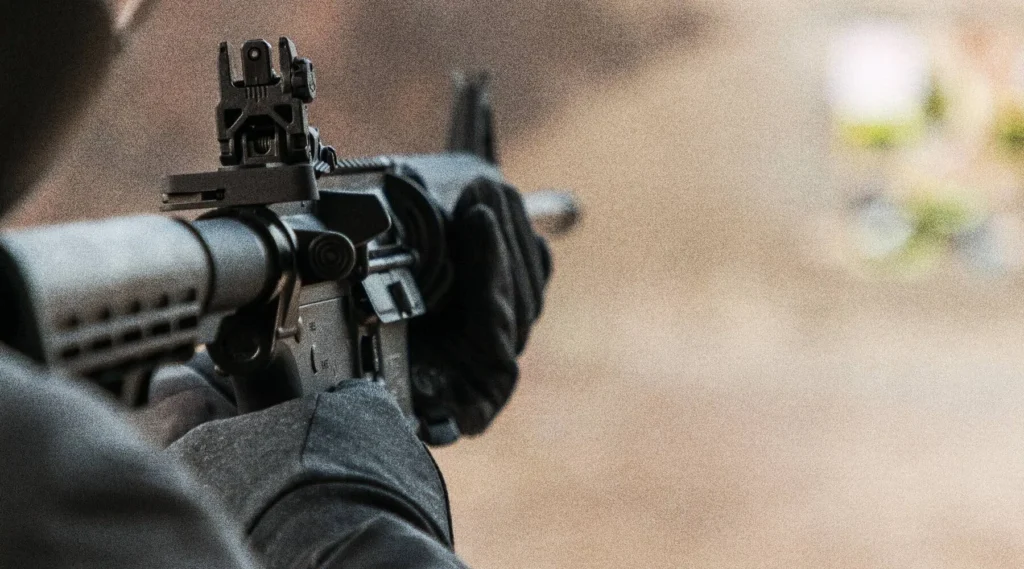
- .223 Remington: Generates a very mild recoil energy of about 4 to 4.5 ft-lbs. This minimal kick makes it a great choice for beginners, youths, or rapid second-shot recovery in competition or defensive scenarios.
- 6.5 Grendel: Produces approximately 9 ft-lbs of recoil energy. Not exactly a shoulder bruiser, but still double the 223 recoil. However, most experienced shooters find this level of recoil to be entirely manageable, especially compared to larger calibers like the .308.
Where Each Round Shines
Your choice between the 223 vs 6.5 Grendel will ultimately depend on how you plan to use your rifle.
| Scenario | 6.5 Grendel | .223 Remington |
|---|---|---|
| Home Defense | Potentially too powerful, risking over-penetration. Higher ammo cost and scarcity are drawbacks. | Winner. Lighter bullets reduce over-penetration risk. Wide availability of specialized defensive loads and affordability is a major plus. |
| Small-Game/Varmint Hunting | Overkill for smaller game, but accurate. Heavier bullets buck wind better on longer shots. | Winner. Ideal for varmints, coyotes, and prairie dogs due to its flatter short-range trajectory and lower cost. |
| Medium/Large Game Hunting | Winner. The clear choice for deer, hogs, and black bear up to 400 yards. Packs a big punch and boasts deep penetration for ethical harvests. | Unsuitable and often illegal for medium-to-large game due to insufficient energy, especially at a distance. |
| Range/Plinking | More expensive per round, limiting high-volume shooting. | Winner. Vastly more affordable and widely available, making it the economical choice for frequent practice and fun. |
| Long-Range/Competition | Winner. Superior ballistic coefficient means less wind drift and more retained energy past 300 yards. A favored option for long-distance shooting. | Excellent out to 500 yards, but its trajectory falters beyond that. Staple in 3-gun matches due to low cost and low recoil. |
| Law Enforcement/Military Use | Niche adoption but not standard issue. | Winner. Derived from the .223, the 5.56 NATO is the standard for the U.S. military and many NATO forces. |
A Brief History
The Origin of the 6.5 Grendel
Back in 2003, Bill Alexander (the guy behind .50 Beowulf) wasn’t impressed with what .223/5.56 was bringing to the table—especially when it came to precision and long-range punch. So he and his team decided to try their hand at cooking up something better. Thus, the 6.5 Grendel was born.
The mission was clear: build a round that runs clean in an AR-15, but hits harder, flies flatter, and stretches way farther. And they nailed it.
Fun fact: You remember Beowulf from high school English class? (Yeah, the one with the monster.) That’s where the name “Grendel” comes from. Big, mean, and built to do damage. Fitting, right?
The Origin of the .223 Remington
The .223 Remington was designed by Remington Arms in the early 1960s as a high-velocity, low-recoil cartridge option for lightweight rifles. It was the precursor to the 5.56x45mm NATO cartridge and was the OG caliber for the ArmaLite AR-15 rifle.
Its primary design goals were to deliver effective terminal ballistics through high velocity and bullet fragmentation while remaining affordable and easy to shoot. This made it immensely popular for military, recreational, and defensive use.
Frequently Asked Questions (FAQs)
Is 6.5 Grendel or .223 cheaper to shoot?
The .223 Remington is significantly cheaper. Due to its widespread military and civilian use, .223 ammo is produced in bulk, with FMJ rounds often costing between $0.30 and $0.50 per round. The 6.5 Grendel is a more specialized round with fewer manufacturers, making it a more expensive choice.
Can I use 6.5 Grendel in a standard AR-15?
Yes, but with small modifications. To convert a standard AR-15 to fire 6.5 Grendel, you need to change the barrel, the bolt (due to the Grendel’s larger rim diameter), and use a specialized magazine.
Which has more recoil, the 6.5 Grendel or the 223?
The 6.5 Grendel has more recoil since it generates about 9 ft-lbs of free recoil, whereas the .223 generates about half that, at 4-4.5 ft-lbs.
Is ammo availability an issue for the 6.5 Grendel?
Compared to the .223, yes. The .223 is one of the most widely available and popularized cartridges in the world. While the 6.5 Grendel is gaining popularity, it remains a niche caliber with fewer manufacturers and less availability on store shelves. However, Target Sports USA offers many 6.5 Grendel options here.
Can the 6.5 Grendel be used for hunting large game?
Most definitely! The 6.5 Grendel is an excellent choice for hunting medium to large game such as deer, hogs, and black bear. Its heavier bullets and superior energy retention make it effective out to 400 yards for this purpose.
Why doesn’t the military use the 6.5 Grendel?
While the 6.5 Grendel was designed to offer improved performance over the standard 223/5.56 NATO round, large-scale military adoption involves immense logistical challenges. The existing infrastructure, massive stockpiles of 5.56 ammunition, and the sheer cost of re-chambering millions of service rifles make a widespread switch prohibitive, even if a cartridge offers superior ballistics.
Bulk-Buy & Deals
Whether you’ve settled on the long-range power packed punch of the 6.5 Grendel or the affordable versatility of the .223 Remington, Target Sports USA has the ammunition to feed your rifle. Additionally, for shooters prioritizing cost-effectiveness for high-volume shooting, bulk purchases with the AMMO+ membership offer significant savings. Check out our current deals and enjoy the convenience of ammunition shipped directly to your door.
Disclaimer:Always handle firearms responsibly and adhere to all local, state, and federal laws. The information provided is for educational purposes. Seek professional training from a qualified firearms instructor.
Check out our Instagram for updates on deals, giveaways, and more! We also have an X here.
Madalynn (Maddie) Giglio is a part of the creative team behind the brand marketing moves at Target Sports USA. With several years of experience across blog content, social media, and strategic marketing, she brings a seasoned eye to every campaign worked on, whether it’s collaborating hand in hand with top influencers like Tony Sentmanat (RealWorldTactical) or reppin’ the TSUSA brand at industry events like the Great American Outdoor Show (GAOS).
She has built a strong foundation in the firearms space by obtaining hands-on experience in the field, learning from industry pros, and hitting the range with friends and family. Her mix of first-hand experience and marketing instincts makes her a trusted voice and helps her craft content that speakers to serious shooters and new gun owners alike.
